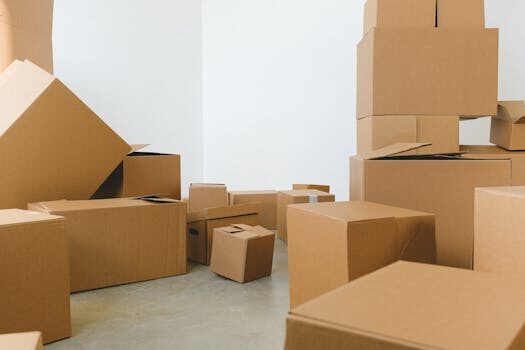How to find the right diaper size for your baby

Choosing the correct diaper size for your baby is essential for ensuring comfort and preventing leaks. With so many options available, it can be challenging for new parents to determine which size is the best fit. This guide will help you understand the factors to consider when selecting the right diaper size.
In this article, we will explore various aspects, including diaper size charts, indicators for size changes, and how to ensure a proper fit. By the end, you'll be equipped with the knowledge needed to keep your baby comfortable and dry.
What is a diaper size chart and how is it used?
A diaper size chart is a visual guide that helps parents choose the appropriate diaper size based on their baby's weight and age. Understanding these charts is crucial for making informed decisions about diaper purchases. Most brands, such as Pampers and Huggies, offer comprehensive size charts that outline their sizing by weight, which can be more effective than using age alone.
Using a diaper size chart is straightforward. You simply weigh your baby and compare their weight to the recommended range for each diaper size. This will help you find the right fit and prevent leaks. Consulting a chart regularly as your baby grows will ensure that you consistently select the right size.
It is essential to remember that each brand may have slight variations in their size charts. Therefore, always check the specific chart of the brand you are using for the best results.
When should you switch from newborn to size 1 diapers?
Newborns typically require size "Newborn" diapers, designed for babies weighing up to 10 pounds. However, as your baby grows, you may need to transition to size 1 diapers. Knowing when to make this switch can save you from leaks and discomfort.
Generally, you should consider switching to size 1 when your baby is around 10 pounds or if you notice signs indicating that the current size is too small. Parents often find it necessary to change sizes within the first few weeks of life, so stay vigilant!

Some signs that it's time to switch include difficulty fastening the diaper, red marks around the legs or belly, and frequent leaks. If you notice any of these indicators, it might be time to move to a larger size.
How do you determine diaper size by weight?
The most reliable method to determine diaper size is by your baby's weight. Most diaper brands provide detailed charts indicating which size corresponds to specific weight ranges. To ensure you're using the correct size, weigh your baby regularly and refer to the appropriate size chart.
- For example, size "Newborn" typically fits babies weighing up to 10 pounds.
- Size 1 is usually for babies weighing between 8 and 14 pounds.
- Size 2 accommodates those weighing between 12 and 18 pounds.
By focusing on weight rather than age, you can more accurately assess the right diaper size for your baby. As babies grow at different rates, this method provides a more individualized approach to diaper sizing.
What are the signs your baby needs a bigger diaper size?
Recognizing when your baby needs a bigger diaper size is crucial for their comfort. Some common signs to look out for include:
- Visible red marks on your baby's skin, indicating the diaper is too tight.
- Frequent leaks, especially during the night.
- Difficulty fastening the diaper securely.
If you notice any of these signs, it's likely a good time to size up. Always prioritize your baby's comfort when selecting a diaper size, as a poorly fitting diaper can lead to irritation and skin issues.
How to know if a diaper is fitting properly?
To ensure that a diaper fits properly, you should check several key aspects. A well-fitting diaper should feel snug but not too tight, allowing you to fit at least two fingers comfortably under the waistband. This is an essential indicator of a good fit.
Additionally, examine the leg openings; there should be no gaps that could lead to leaks, nor should they be so tight that they leave marks on your baby's skin. When you put the diaper on, make sure it covers your baby's belly button. This is crucial for preventing leaks.

If you find that you are frequently adjusting the diaper or if it appears to be too loose or too tight, it may be time to reassess the size you are using.
What are the different diaper sizes available?
Diapers come in various sizes to accommodate the growth of your baby. Here's a general overview of the diaper sizes you can expect to find:
- Preemie: For premature babies, usually under 5 pounds.
- Newborn: For babies up to 10 pounds.
- Size 1: Typically for babies weighing between 8 and 14 pounds.
- Size 2: For babies weighing between 12 and 18 pounds.
- Size 3: For babies weighing between 16 and 28 pounds.
- Size 4: For babies weighing between 22 and 37 pounds.
- Size 5: For babies weighing 27 pounds and up.
- Size 6: For babies weighing 35 pounds and up.
Understanding these sizes will help you navigate the diaper aisle and choose the right products as your baby grows. Keep in mind that individual brands may vary slightly in size specifications.
Why is choosing the right diaper size important?
Choosing the right diaper size is critical for several reasons. A well-fitting diaper ensures that your baby remains comfortable and dry, which is essential for their overall well-being. Properly sized diapers help prevent leaks, which can lead to diaper rash and discomfort.
Additionally, choosing the correct size minimizes the risk of skin irritation. If a diaper is too tight, it can cause red marks and discomfort for your little one. Therefore, always monitor your baby's growth and adjust diaper sizes accordingly to promote a healthy and happy environment.
Moreover, using the correct diaper size can save you money in the long run. Buying the right size means fewer leaks and less frequent changes, making diapering a smoother process for both you and your baby.
Related questions about diaper sizing
How to find the right diaper size for baby?
To find the right diaper size for your baby, start by weighing them and consulting the diaper size chart of your chosen brand. Ensure that you consider your baby's weight over their age, as this provides a more accurate sizing method. Check for signs that indicate whether your baby is comfortable and adjust sizes as needed.

How do I choose the right diaper for my baby?
Choosing the right diaper involves checking your baby's weight against the size chart of the brand you use. Observe how the diaper fits around the waist and legs. Ensure you can comfortably fit two fingers under the waistband. Pay attention to leaks or discomfort signs—these are key indicators that you may need to change sizes.
How do I know when it's time to change my diaper size?
It's time to change your diaper size when you notice that your baby is experiencing leaks, red marks, or difficulty fastening the diaper. Regularly weigh your baby and compare their weight to the size chart. Being proactive about these changes ensures your baby remains comfortable and dry.
Should a diaper cover the belly button?
Yes, a diaper should typically cover the belly button to prevent leaks and ensure proper protection. If the diaper doesn't cover the belly button, it may be too small and could lead to issues such as leaks or skin irritation. Always ensure a snug fit around the waist for optimal protection.